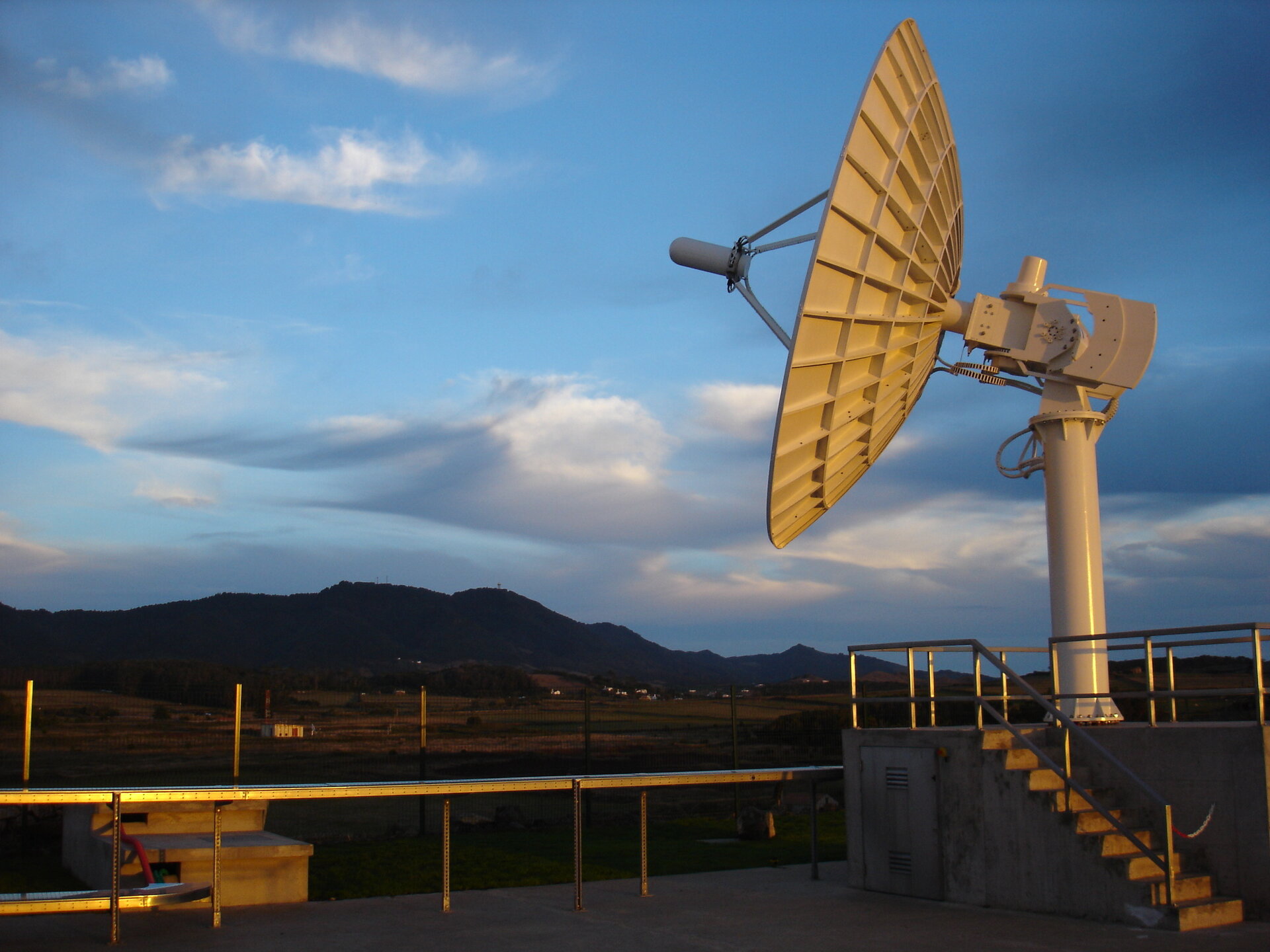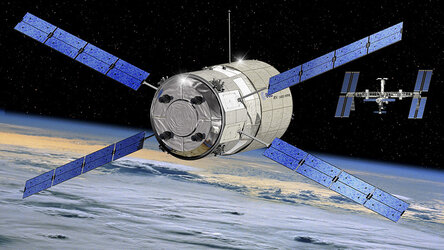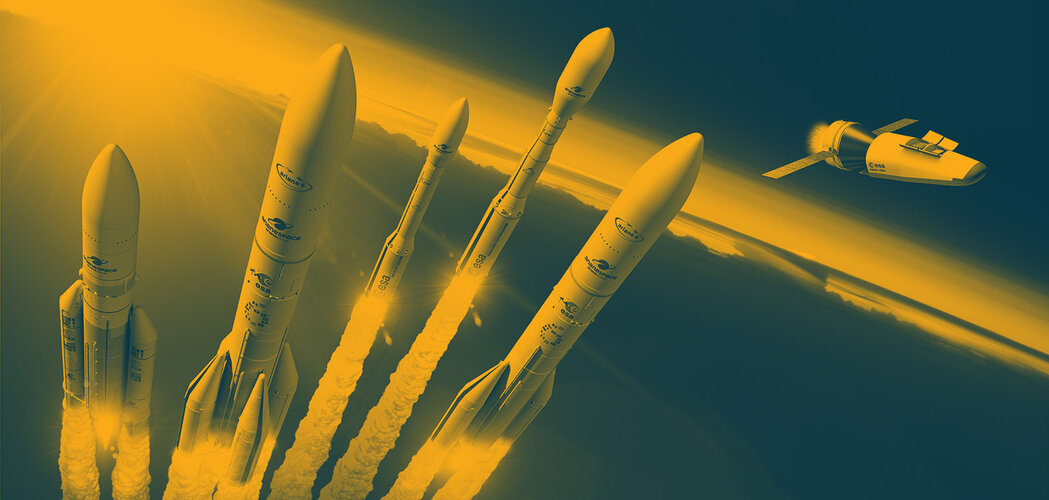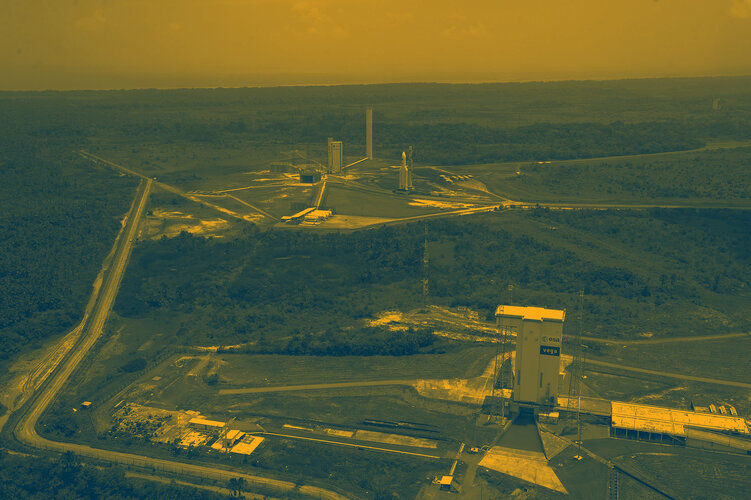Azorean station to track Ariane launch
When ATV Johannes Kepler is lofted into space on 15 February, an ESA tracking station on Portugal's Santa Maria island will watch closely, gathering crucial data as Ariane 5 streaks overhead.
In 2008, the Santa Maria station, located five kilometres from the town of Vila do Porto on the Portuguese island of Santa Maria, in the Azores, became the latest station to join ESA's global ESTRACK tracking network. Santa Maria's 5.5 m-diameter antenna provides crucial tracking services for Ariane 5 rockets as they boost Europe's Automated Transfer Vehicles (ATVs) into orbit.
With a total launch mass of some 20 tonnes, including fuel, food and cargo for the International Space station, the ATV vessels are the largest and most sophisticated spacecraft ever built in Europe. The next one, ATV Johannes Kepler, is due for launch on 15 February. It will dock automatically with the ISS eight days later, on 23 February, and remain attached to the Station until June, providing critical orbit reboosts.
Santa Maria: geostrategic location
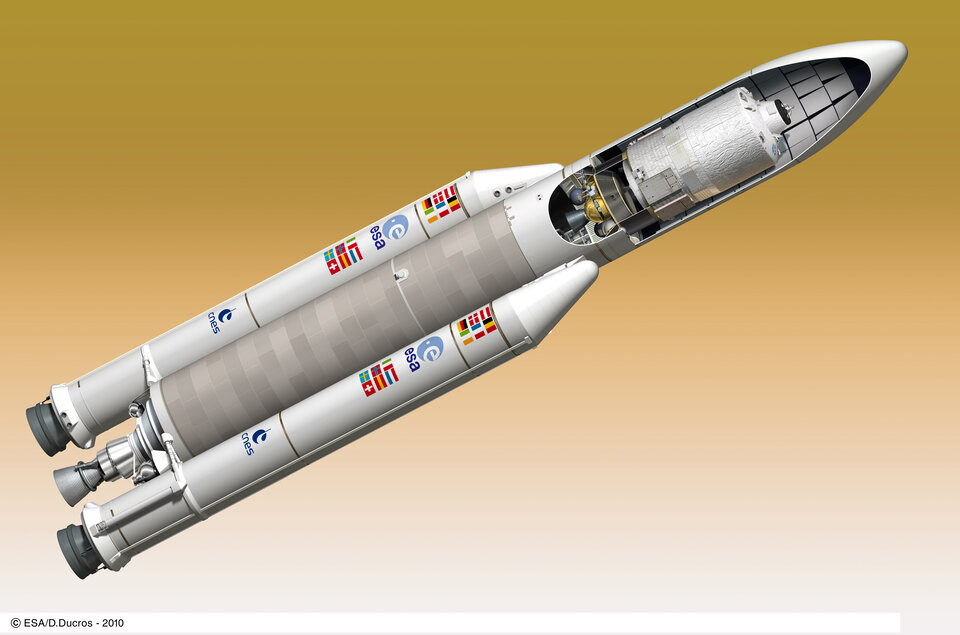
In order to place ATVs into the correct orbit, Ariane launchers must follow a special flight path that takes them almost directly over Santa Maria island just a few minutes after launch from Europe's Spaceport at Kourou, French Guiana.
This particular trajectory made it necessary to set up a specific network of tracking stations to receive real-time data during all critical launch events. For ATV launches, ESA stations provide launcher tracking services to CNES, the French space agency, which oversees the Ariane tracking network.

Santa Maria is one of the first ESA stations that can track a launcher during powered flight, and the geography of the Azores provides an ideal location to acquire signals from launchers climbing northeast from Kourou.
Next week, during the first powered phase, Ariane V200 with ATV on board will pass 130 km above the island and sweep into view of the station's tracking antenna for about eight minutes. During this pass, the station will receive crucial telemetry data via radio containing up-to-the-second information on the status of Ariane's systems such as propulsion, guidance and navigation.
Station is ready for Ariane launch
"We performed a series of technical tests with the Santa Maria station in August and September 2010, followed by a full operational test in January. We are fully qualified for next week's Ariane flight and are looking forward to an intense day with excellent results," said Gerhard Billig, ESA's lead engineer responsible for launcher tracking.
After passing over the Azores, Europe and South-East Asia, Ariane will pass over Australia, where it will be similarly tracked by ESA's 15-m station at Perth and by a station at Awarura, New Zealand.

Ariane will loop around Earth, gaining altitude, and make a second pass near Santa Maria, this time at an altitude of 250 km. By this time, ATV will have separated from Ariane, and the launcher will subsequently head toward its planned destructive reentry, which will take place later in its second orbit.
"The Santa Maria station takes advantage of the geostrategic position of the Azorean islands, an important resource for ESA and Portugal – as an ESA Member State – for the implementation of European space projects," said Mario Amaral, coordinator of the Portuguese Space Office.
"We trust the station continues to contribute significantly to ESA and to EU Earth observation programmes, particularly for the Global Monitoring for Environment and Security initiative."
Station supports launchers and Earth observation missions

The station is operated locally under contract by a consortium comprising industrial partners EdiSoft/SEGMA/GlobalEDA of Portugal/Azores on behalf of ESA.
Between Ariane flights for ATV, the Santa Maria station provides tracking for missions such as ESA's Envisat and the Canadian Space Agency's Radarsat-1, and supports the CleanSeaNet oil spill monitoring and vessel detection service of the European Maritime Safety Agency. This latest Earth-observation capability was developed by EdiSoft as a commercial initiative for which the firm has signed an exploitation agreement with ESA.
"Operation of the Santa Maria station is an integral part of our services for ESA. Tracking Ariane and receiving remote sensing data proves the station's capabilities in two separate domains: launcher tracking and Earth observation," said Ricardo Conde, the EdiSoft station manager.
Some of the information gathered by Santa Maria next week will be relayed immediately back to the Ariane control centre in Kourou, where engineers will use it to make initial assessments of ATV’s orbit. The data will also be archived and later sent to Arianespace for use in assessing the overall performance of the launcher, helping to make future flights even more accurate.
About Santa Maria station

The Santa Maria S-band station, also known as 'Montes das Flores' (Hill of Flowers), is located five kilometres from the town of Vila do Porto on the Portuguese island of Santa Maria, in the Azores, some 1500 km from Lisbon.
Santa Maria is one of the first ESTRACK stations with launcher tracking capability and is used to receive real-time telemetry from launches originating from ESA's Spaceport in Kourou, French Guiana. It also tracks a number of Earth observation missions, and in the near future will also be used to receive launcher telemetry for the planned Galileo global positioning satellite launches via Ariane or Soyuz from Kourou.
The station was developed under the Ariane Development Programme (ACEP), with technical management from ESA's Operations directorate based at the European Space Operations Centre (ESOC), Darmstadt, Germany. The station was established at the Monte das Flores site in Santa Maria within the frame of an agreement between ESA and the Portuguese authorities.















 Germany
Germany
 Austria
Austria
 Belgium
Belgium
 Denmark
Denmark
 Spain
Spain
 Estonia
Estonia
 Finland
Finland
 France
France
 Greece
Greece
 Hungary
Hungary
 Ireland
Ireland
 Italy
Italy
 Luxembourg
Luxembourg
 Norway
Norway
 The Netherlands
The Netherlands
 Poland
Poland
 Portugal
Portugal
 Czechia
Czechia
 Romania
Romania
 United Kingdom
United Kingdom
 Slovenia
Slovenia
 Sweden
Sweden
 Switzerland
Switzerland


























